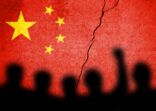Investors should adopt a barbell approach given the likelihood that the economic outlook will continue to fluctuate throughout 2023, according to David Chao, global market strategist for Asia Pacific ex-Japan at Invesco during his recent second quarter outlook.
“Our asset allocation strategy really is this barbell approach, where we think it makes sense for investors to be positioned more defensively right now given some of the macro variables that are going on,” he said.
“But I think it also makes sense for investors to start positioning for recovery and I think that the recovery is likely to start once central banks start to pause rates.”
Financial markets have been see-sawing this year as they struggle to process the myriad of new data points that are emerging, a lot of them contradictory.
After a strong start to the year in the January, largely fuelled by euphoria from China’s reopening and the belief that the US Federal Reserve was nearing the end of its interest rate hiking cycle, this has given way to renewed pessimism due to sticky inflation and recent bank crises.
For the time being, Chao recommends that investors position themselves defensively and opts for government bonds, high-quality credit and cash.
His preference for government bonds and high-quality credit is not altogether surprising as a number of asset managers have moved to become overweight fixed income, particularly investment grade.
The reason for that is largely because entry points are a lot more attractive now following last year’s sell-off, while most asset managers generally eschew high yield because of the rising risk of defaults even though interest coverage ratios are healthier than they have been for many years.
Emerging markets
On the other hand, Chao is betting that high yield and equities will do well during a recovery and has a particular penchant for emerging market equities.
“Perhaps my favourite asset class during this recovery phase…(is) emerging market equities,” he said. “And I think within EM [emerging markets], certainly the Apac region looks most attractive given inflation levels are a lot more within acceptable bounds compared to other places like Europe or the US.”
Chao’s preference for emerging market equities is not altogether contrarian as a number of asset managers are betting that the asset class will fare much better after a torrid 2022, which saw the MSCI Emerging Markets Index down 42% at one stage last year.
This is partly due to expectations that the US dollar will weaken this year, which is generally good for emerging markets as it lowers the cost of dollar-denominated debt.
“I think within EM, certainly the Apac region looks most attractive given inflation levels are a lot more within acceptable bounds compared to other places like Europe or the US.”
david chao, invesco
As the trajectory of the economy has seesawed during the first three months of the year, the US dollar has responded in kind thus far, although it is up slightly this year.
Most analysts are still predicting that the US dollar will weaken this year after last year it hit a 20-year high and given the expectation that the Fed likely only has one more interest rate hike left in this cycle.
Another factor supporting the thesis that emerging markets will fare well this year is the shift in trade relations and reorganisation of supply chains, which should create new opportunities for emerging market countries other than China, particularly in Asean.
China
Meanwhile, Chao is also bullish about the opportunities in mainland China, which has proved popular among foreign investors ever since China abandoned its zero-Covid policy in November last year.
For example, according to data from Hong Kong Exchanges and Clearing, foreign investors bought Rmb141bn ($20.6bn) worth of stocks through the Shanghai and Shenzhen Stock Connect schemes in January, more than double the previous monthly record in 2021.
Indeed, the CSI 300 index rose by nearly 20% by the end of January from its October lows, although it has since pared back some of those gains.
“I’ve always thought that when credit is expanding in China like it recently has, that should be positive for risk assets and that’s why we become more bullish on Chinese onshore equities recently,”
david chao, invesco
This has led some analysts to question whether the reopening rally is now done. Those sceptical about its continuation point to the fact that a lot of the news that led to the relief rally is now in the rear-view mirror.
In addition to the fact that China began reversing its zero-Covid policy in November, it also announced its 16-point plan to save the embattled property sector that month.
Adherents of the idea that the reopening rally still has further to go point to the $2.6trn in excess savings that Chinese households accumulated during the pandemic as well as the large valuation discount between China and other markets.
Chao also noted the fact that unlike other central banks in the region, which are aggressively hiking interest rates to stave off inflation, the People’s Bank of China has been cutting the risk reserve ratio was also supportive of Chinese equities.
“I’ve always thought that when credit is expanding in China like it recently has, that should be positive for risk assets and that’s why we become more bullish on Chinese onshore equities recently,” he said. “We continue to believe in a recovery of Chinese equities for this year.”

















